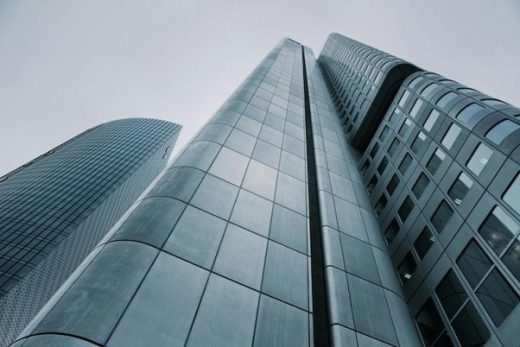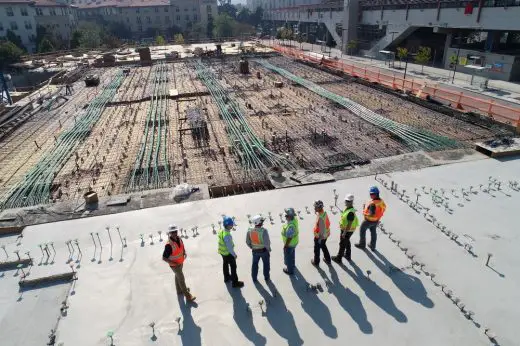Boost employee productivity with architectural design guide, Optimal work environment advice
The Importance of Architectural Design in Boosting Employee Productivity
9 July 2024
In today’s business world, employee productivity is one of the most important factors in a company’s success or failure. One of the often-overlooked aspects impacting production is the workplace’s architectural design.
A worker’s environment has a significant impact on their level of job satisfaction, creativity, and productivity. This research examines many elements that contribute to an optimal work environment to conclude the role of architectural design in boosting employee productivity.
Apart from mere aesthetics, architectural design today significantly affects office use and efficiency. In the fast-paced and competitive environment of today, businesses are increasingly realizing that the value of creating work environments not only looks good but also helps the psychological and physical well-being of their employees. A well-designed workspace may achieve better morale, reduced stress, and higher output. This research investigates how some aspects of architectural design enable a decent working environment.
Ergonomics and Comfort
Ergonomics is the study of creating tools and desks to meet user needs, hence increasing comfort and productivity. An ergonomic office reduces the risk of physical strain and injury, which could lead to absence and decreased output. Among the ergonomic problems that might have a significant influence are computer monitors at eye level, adjustable desks, and seats at appropriate heights. Comfortable employees are less prone to feel fatigued and uncomfortable, freeing them to focus more on their tasks.
“Proper ergonomic design is necessary to prevent repeated strain injuries, which can develop over time and lead to long-term disability” stated Shamsul Duha, CTO and Digital Marketing Expert of CarrierBagShop. This underlines the critical role ergonomics plays in maintaining employee health and optimizing performance, therefore promoting a more sustainable and effective workplace.
Natural Light and Ventilation
Natural light is proven to help employee well-being and productivity. It helps control the body’s circadian clock, improving general mood and quality of sleep. Well-ventilated spaces also offer a continual flow of fresh air, reducing the concentration of allergens and indoor pollutants. The workplace is healthier when fresh air and natural light mix, enhancing cognitive capacity and production.
“Access to natural light and fresh air is a critical component of a healthy indoor environment, significantly boosting cognitive functioning and productivity,” stated a spokesperson. This underlines the significance of including natural light and ventilation in workplace buildings since these elements create more active and efficient staff. Businesses that give these components first importance will be able to create environments that support the mental acuity as well as the physical condition of their employees.
Flexible and Adaptable Spaces
The modern workplace is dynamic and requires sections that could evolve to suit various needs and activities. Flexible desks that may be readily moved to suit different activities—group projects or focused solitary work—help to greatly increase productivity. Moveable furniture, modular walls, and multipurpose spaces allow staff members to customize their workspace to match their present needs, therefore fostering creativity and efficiency.
“Designing flexible workspaces can accommodate different work styles and increase overall workplace satisfaction,” says Holly Cooper Marketing Manager at Windows & Doors UK. This adaptability ensures that employees can switch between multiple approaches to working, thereby improving the responsiveness and efficiency of the company. Investing in adaptable and flexible office designs would enable companies to better satisfy the several needs of their employees, therefore promoting improved morale, creativity, and output. Keeping a motivated and contented workforce primarily hinges on the ability to rapidly reorganize desks to meet changing needs.
Acoustic Design
Many companies deal with noise pollution, which causes distractions and reduced output. Good acoustic design can create a quiet and focused work environment by adjusting sound levels. Using materials that absorb sound, arranging workstations strategically, and designating quiet zones help achieve this. Less noise lets employees concentrate better and finish tasks faster.
Ozzy Akpek, CEO of Smile Art Design claims that “Acoustic designs in office environments can reduce noise distractions and improve concentration, thus enhancing employee productivity.” Using acoustic solutions, including carpeting, acoustic panels, and white noise machines, will help greatly lower unwanted noise. Creating designated quiet areas also allows employees to work in the environments of their choice—silent rooms for concentration or group projects depending on their needs. By employing deliberate design, companies can reduce noise pollution and create a more concentrated and practical workspace.
Biophilic Design
Biophilic design connects workers with the natural world by incorporating natural components into the built workplace. This method has been demonstrated to reduce stress, boost mood, and enhance cognitive performance. Including water elements, natural materials, and plants in the workstation will help to create an inspiring and serene surrounding. Views of nature through windows or access to outside places can also provide mental pauses and regeneration, therefore enhancing general production.
Gemma Hughes, Global Marketing Manager at iGrafx notes, “Biophilic design not only enhances aesthetics but also improves mental health and productivity by fostering a connection with nature.” This design idea creates visually beautiful yet functional areas using the inherent human preference for surroundings. Including biophilic elements will enable companies to create a more pleasant and motivating atmosphere, therefore producing happy, contented, better, and more efficient employees. At last, the emphasis on natural connections aids in building a sustainable and effective workplace.
Technology Integration
Incorporating state-of-the-art technology into the workplace has the potential to boost efficiency and output. Smart office technology, high-speed internet, and collaboration tools allow employees to stay connected while working more efficiently. One way to enhance productivity and decrease unnecessary interruptions is to incorporate technical features into the design, such as automated lighting controls and wireless charging stations.
Andrei Vasilescu, Co-founder and CEO at DontPayFull states that “The integration of smart technology in the workplace can significantly boost productivity by streamlining operations and enhancing connectivity “. This technology integration ensures that staff can swiftly obtain the necessary resources by encouraging improved communication and teamwork.
By eliminating the need for humans to perform mundane tasks and increasing automation, smart technology allows workers to focus on higher-value, more creative aspects of their jobs. In addition to boosting individual productivity, investing in these technologies helps to create a more flexible and adaptive work environment—essential for success in a cutthroat market.
Boost employee productivity with architectural design Conclusion
The architectural design of an office is among the most powerful instruments one may use to affect employee performance significantly. Emphasizing ergonomics, natural light, flexible spaces, acoustic design, biophilic components, breakout areas, technological integration, and cooperative spaces, companies can build settings that improve the well-being and efficiency of their personnel. Investing in attentive architectural design is about creating a workplace that supports productivity, well-being, and engagement—not merely having an aesthetically beautiful one. This will help businesses to flourish.
In essence, employee productivity is greatly influenced by how the workplace is designed. Businesses that prioritize architectural features that improve comfort, health, and cooperation will find their workforce performing better. Architectural design will become increasingly crucial as companies increase efficiency; so, it is a major factor for every company trying to survive in the competitive market.
Comments on this guide to Boost employee productivity with architectural design article are welcome.
Construction Safety
Construction Safety Posts
Common construction site injuries
Construction industry health and safety importance
Why Construction Safety Is Important
Building Articles
Residential Architecture
Comments / photos for the Boost employee productivity with architectural design advice page welcome.







